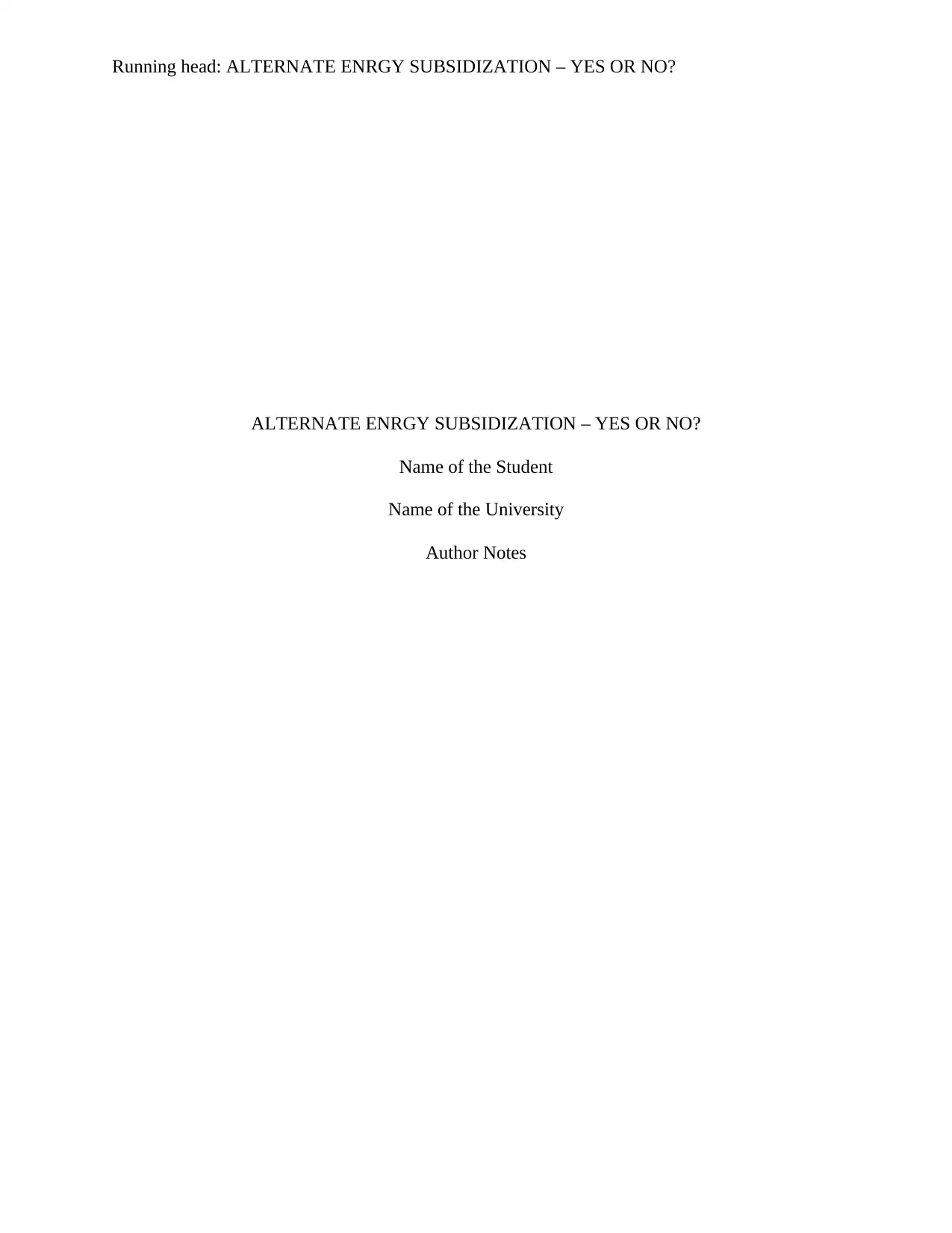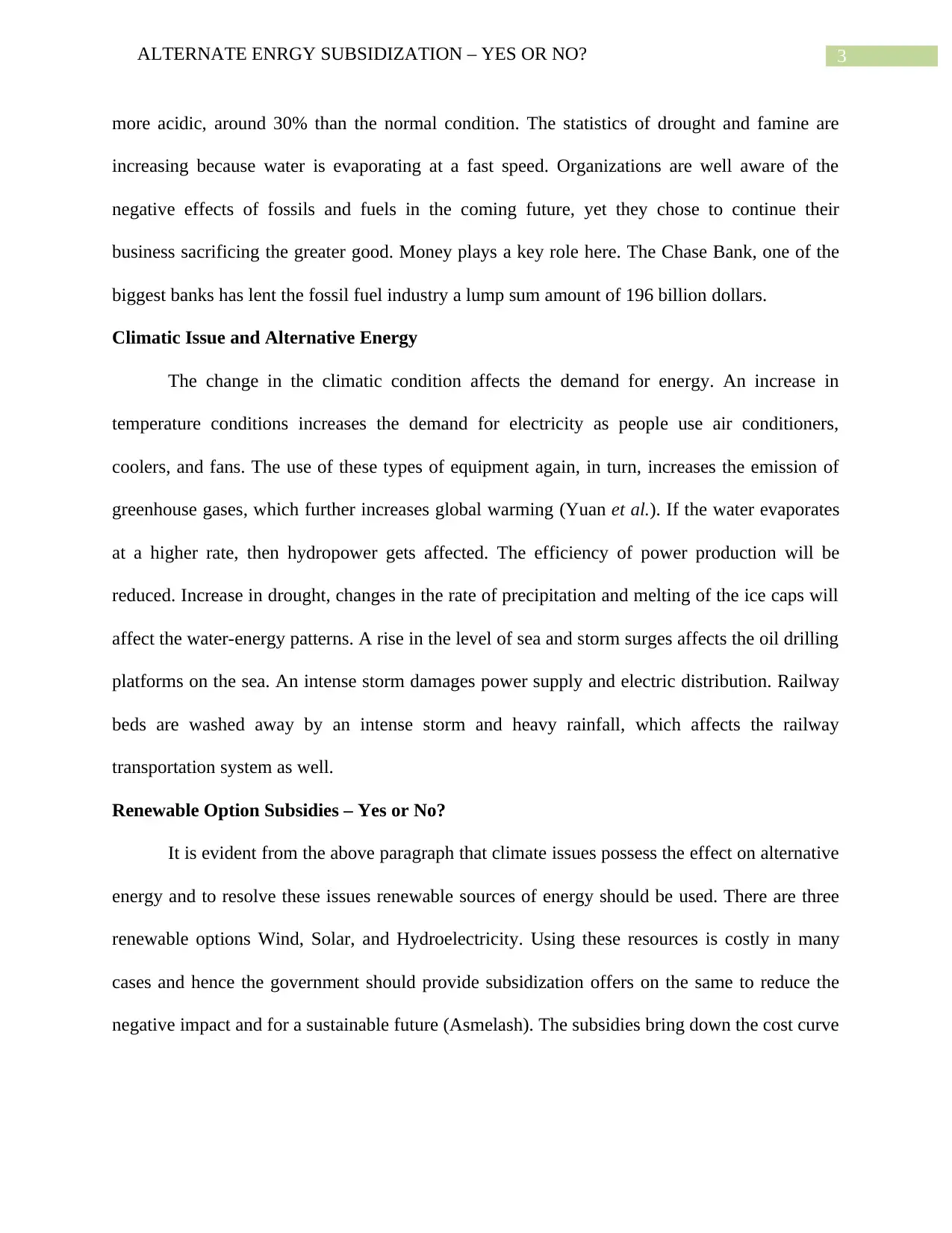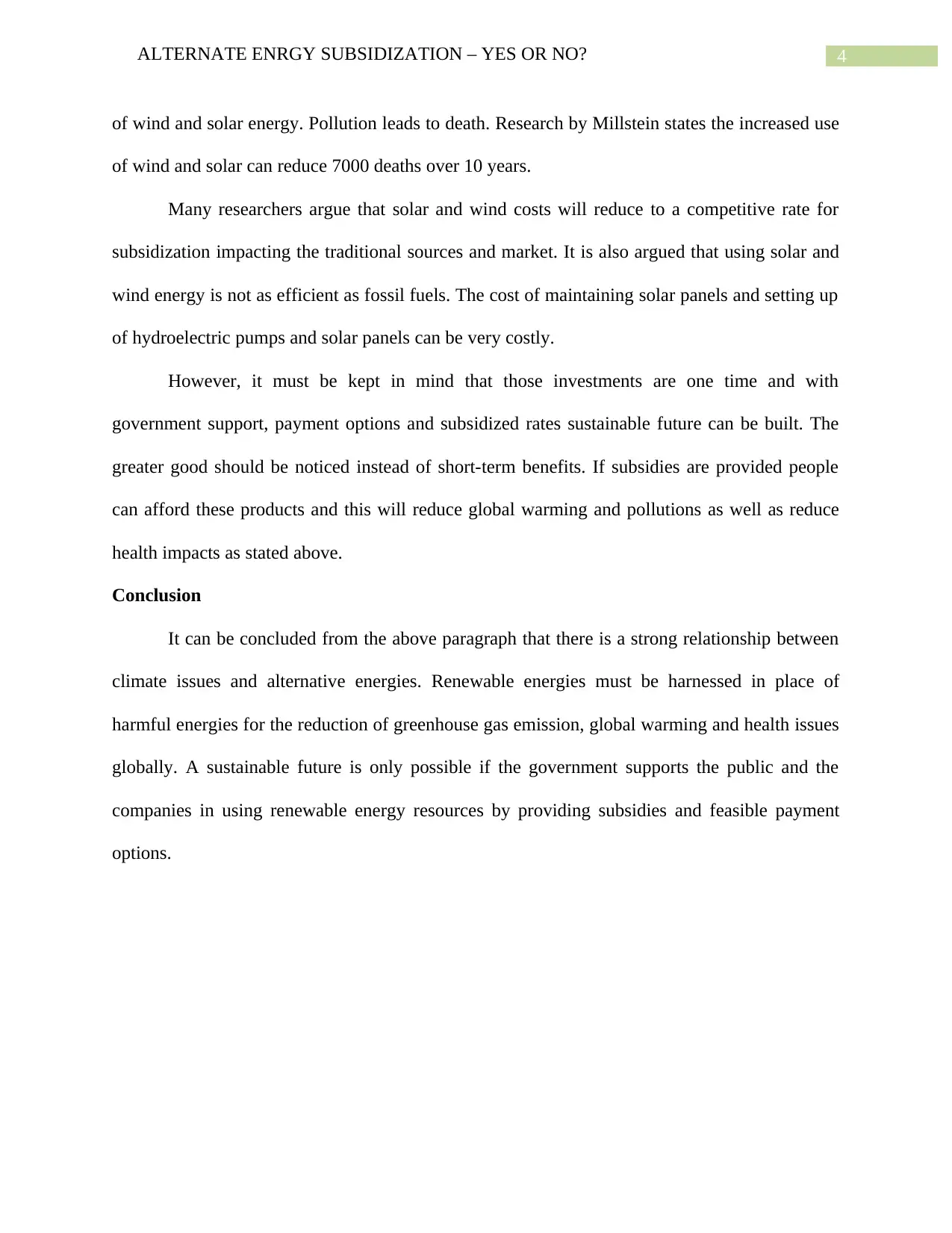Final Essay: Alternate Energy Subsidy – A Comprehensive Argument
VerifiedAdded on 2022/08/01
|6
|1169
|17
Essay
AI Summary
This essay examines the critical debate surrounding the subsidization of alternative energy sources. It begins by highlighting the detrimental effects of fossil fuels and global warming, emphasizing the role of carbon emissions and their impact on the environment and human health. The essay then explores the connection between climate issues and the demand for energy, particularly the impact of changing weather patterns on energy consumption and production. The core argument centers on whether governments should continue to subsidize renewable energy options like wind, solar, and hydroelectricity. It presents arguments for subsidization, emphasizing the potential to reduce greenhouse gas emissions, mitigate global warming, and improve public health. The essay acknowledges counterarguments, such as the cost of implementation and maintenance, but ultimately concludes that government support through subsidies and feasible payment options is crucial for a sustainable future and the transition to renewable energy sources. The essay uses credible evidence and research to support its claims, including statistics on carbon emissions, the effects of climate change, and the potential benefits of renewable energy. The author advocates for the greater good over short-term benefits, and the need for a shift away from fossil fuels.
1 out of 6













![[object Object]](/_next/static/media/star-bottom.7253800d.svg)